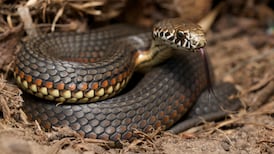Having cut flowers around the house is always cheering, but with a disturbing story lurking behind the blooms, is it best to grow your own? Here's how, writes JANE POWERS.
SOME OF US are terribly fussy about the food we consume: it has to be organic, locally-grown and humming with virtue. But there is a notable unhitching of these principles when it comes to cut flowers for the house. Consider this: a third of the blooms sold in Europe are grown in Kenya, where many of the workers are exposed to toxic levels of pesticides and fungicides, and are subject to persistent work-related injuries. I’m as uncomfortable writing this as you are reading it, but it is hard to ignore.
There is, moreover, a grim satire about the situation: it is mainly women who buy and receive flowers, while most of the workers are single mothers – with fewer rights than a family pet. I won't spoil your weekend further, but, if you want a clearer picture, I recommend the Growing Painsreport, which can be downloaded from the War on Want website (www.waronwant.org). I also heartily recommend Amy Stewart's very readable book, Gilding the Lily(Portobello Books, £12.99), wherein she inquires extensively into the world of commercial flower growing: including matters such as worker conditions, air miles, plant breeding, patenting, pesticides, and the reason why flowers don't smell any more.
So, where does that leave the flower-lover? Well, in two places: the first is asking questions about the provenance of the blooms she (or he) buys, and the second is in the back garden, getting to grips with the soil, and growing one's own. And you don't need a big space. I asked British cut-flower enthusiast, Sarah Raven, to name the smallest area possible that could function as a dedicated cutting patch, and she suggested: "One metre by one metre." Annuals, she says, are very prolific, and will keep producing blooms if you pick them regularly. So, if you go for the metre-square option: "Start with Calendula'Indian Prince' (English or pot marigold) and Salvia viridis(blue clary) or Cerinthe."
These can be sown the autumn before, so that they produce blooms early (in April in favoured areas in Ireland). Then, in July, she advises, replace them with Cosmos(she likes the white 'Purity' or the deep-pink 'Dazzler'), and a small-bloomed sunflower, such as Helianthus'Vanilla Ice', "and you'll get at least a bunch a week". These last three plants, by the way, are about the most productive that she knows.
Cosmos are half-hardy annuals, and the above sunflower is a cultivated variety of a native of Florida and Texas, so the seeds do better if sown in spring. Other cutting garden half-hardies that should be started in spring include love-lies-bleeding ( Amaranthus caudatus), flowering tobacco ( Nicotiana), spider flower ( Cleome, beloved of slugs and snails), and zinnias. These last, which originated in Mexico and the southern parts of the US, come in a festive range of colours: purple, pink, orange, red and lime green. Zinnias are Sarah Raven's favourite cut flower: "Wonderful colours and flower forms, very prolific and a long vase life." (The vase life of all flowers can be prolonged by adding a drop of bleach or vinegar in the water, she counsels.)
Many annuals (although not the above) will happily weather the winter. Hardy annuals are a boon to the gardener, because they may be sown in September and October (and some, such as sweet peas, even later). This avoids the springtime rush-hour of seed-sowing, and the ensuing traffic jam of seed-trays and seedlings. Although they make little growth above ground during the chilly months, the roots of autumn-sown seedlings are quietly growing, and building up a strong framework. This powers the green top growth in spring, as well as making the plants more drought-proof. The ensuing plants will be more robust, larger, and earlier to bloom than those grown from spring-sown seeds. Annuals suitable for cut flowers that may be sown in autumn include: cornflower, love-in-a-mist ( Nigella damascena), Orlaya grandiflora, Phacelia, scabious and all annual poppies (as well as the sweetpea, pot marigold, clary and Cerinthementioned earlier).
Annuals will give you cut flowers for over half the year. The season can be prolonged by growing daffodils and tulips for spring cutting, and spider chrysanthemums for autumn, suggests Sarah. For my own house, we grow potted bulbs for the quiet months: cyclamen, paperwhite narcissus, Hippeastrum(commonly known as amaryllis), crocuses, daffodils and repeat-flowering tulips. The last three can be re-homed in the garden when they finish flowering, while, with the right kind of care, pots of Hippeastrumcan be encouraged to flower again the following year.
Even if you haven't planted them specifically for harvesting, there are several plants in the garden right now that offer long-lasting cut flowers. Among them are the greeny hellebores, such as H. argutifoliusand Helleborus x sterniiand the early euphorbias (varieties of E. characiasand E. amygdaloides). These can be combined with sprays from flowering shrubs, or the red and orange stems that you pruned from dogwood and willow a month ago (and kept, of course).
Both hellebores and euphorbias should be “conditioned” overnight, by standing them in a bucket of cold water so that they fill their tissues with moisture. The following day, cut the stems to the right length and seal by holding them in just-boiled water for 20 to 30 seconds. I love this bit – watching the bubbles squeeze from the cut stem, and feeling that something scientific is happening.
And of course, like all gardeners who pick their own flowers, foliage and stems, I get a great rush of satisfaction seeing them on the table. Not only are they the work of my own hands – and those of my friend Grainne, who helps me – they’re also organically grown. And, instead of clocking up thousands of air miles, they’ve strolled in the back door from the garden, just a few metres away.
jpowers@irishtimes.com








